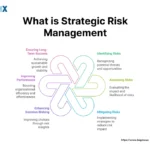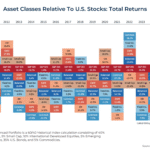In 2025, the U.S. investment landscape is as dynamic as ever. Market conditions are influenced by macroeconomic trends, evolving technologies, regulatory shifts, and unpredictable geopolitical events. Amid such complexity, risk management is not just a safeguard—it’s a competitive advantage.
For U.S. investors aiming to grow and protect their portfolios, a range of modern risk management tools are now available. From AI-driven analytics platforms to traditional stop-loss orders, the market is rich with options tailored to different strategies, asset classes, and risk profiles.
This blog explores the top risk management tools for U.S. investors in 2025, offering insights into their usage, benefits, and how they align with today’s fast-paced financial markets.
Why Risk Management Matters More Than Ever
In an era of economic uncertainty, rising interest rates, and increased market correlation, even seasoned investors are exposed to more risk than they might realize. Effective risk management helps investors:
- Protect capital in volatile markets
- Minimize emotional decision-making
- Ensure long-term financial goals stay on track
- Identify early warning signs of portfolio imbalance
- Maximize returns through calculated exposure
With tools now powered by AI, machine learning, and cloud infrastructure, managing risk has become both more precise and accessible.
Categories of Risk Management Tools
Risk management tools in 2025 fall into five broad categories:
| Category | Focus |
|---|---|
| Analytical Tools | Assess risk metrics like volatility, beta, value-at-risk (VaR) |
| Protective Orders | Set automatic exit strategies like stop-loss, trailing stop |
| Portfolio Platforms | Track allocation, diversification, correlation |
| Hedging Instruments | Options, futures, ETFs to offset market exposure |
| Automation & AI | Intelligent tools that proactively suggest changes or alerts |
Let’s look at the most powerful tools in each category.
1. Riskalyze: Automated Risk Assessment
Type: Analytical & Portfolio Tool
Ideal For: Individual investors, advisors, RIAs
What It Does:
Riskalyze allows users to identify their risk tolerance with a questionnaire-based model and then matches their portfolios to that score. It uses a proprietary Risk Number® (on a scale of 1–99) to quantify risk levels.
Key Features:
- Clear visual reports on how much downside/upside to expect
- Portfolio stress testing
- Integration with broker platforms
- Compliance-ready reports for advisors
2025 Update:
AI enhancements now allow real-time alerts if portfolios deviate from risk tolerance thresholds due to market changes.
2. Morningstar Portfolio Manager
Type: Portfolio Analysis Tool
Ideal For: Retail investors, analysts, wealth managers
What It Does:
Tracks diversification, exposure, sector allocation, and historical risk-return ratios. Excellent for comparing mutual funds, ETFs, and individual stocks based on volatility metrics.
Key Risk Features:
- Sharpe Ratio, Beta, R-squared
- Category-based risk comparisons
- Risk vs. reward scatterplots
- Sector exposure breakdown
Why It’s Great:
Used widely in the U.S. by both professionals and DIY investors. Helps spot overexposure to certain asset classes or styles.
3. Stop-Loss & Trailing Stop Orders (via Broker Platforms)
Type: Direct Trading Tool
Ideal For: Traders, stock investors
What They Do:
- Stop-Loss Orders: Sell a stock when it falls below a preset price to cap losses.
- Trailing Stops: Set a percentage or dollar value below market price that moves up as the asset rises but locks in profits on the downside.
Platforms Offering This (2025):
- TD Ameritrade / Charles Schwab
- Fidelity
- Robinhood
- Interactive Brokers
Why They Work:
In volatile markets, these tools automatically enforce discipline and prevent catastrophic losses.
4. BlackRock Aladdin
Type: Institutional Risk Platform
Ideal For: Fund managers, pension funds, banks
What It Does:
Aladdin (Asset, Liability, Debt and Derivative Investment Network) is BlackRock’s AI-powered platform used to manage portfolios totaling $21+ trillion in assets.
Key Features:
- Multi-asset risk analysis
- Value-at-Risk (VaR) calculations
- Climate and ESG risk monitoring
- Advanced scenario testing
2025 Edge:
It now integrates ESG risk factors alongside traditional risk metrics—crucial for compliance and socially responsible investing mandates.
5. Value-at-Risk (VaR) Calculators
Type: Analytical Model
Ideal For: Quants, analysts, hedge funds
What It Does:
VaR quantifies the potential maximum loss of a portfolio over a defined period, at a specified confidence level (typically 95% or 99%).
Examples of Tools:
- Python-based VaR scripts
- Bloomberg Terminal
- J.P. Morgan RiskMetrics
Why It’s Useful:
It’s a powerful model to gauge worst-case scenarios and required capital reserves. Commonly used in compliance with Basel III risk standards.
6. Monte Carlo Simulators (Wealthfront, Personal Capital)
Type: Retirement & Goal Forecasting Tool
Ideal For: Long-term investors, retirees
What They Do:
Simulate thousands of potential market scenarios to estimate the probability of achieving financial goals under varying levels of volatility and return.
Platforms That Offer Monte Carlo Tools:
- Wealthfront
- Personal Capital
- RightCapital
- Fidelity Retirement Planner
Risk Feature:
These simulators assess portfolio durability in bear markets, high inflation, or interest rate hikes.
7. Options for Hedging (Protective Puts, Covered Calls)
Type: Financial Instrument
Ideal For: Advanced retail investors, fund managers
How They Manage Risk:
- Protective Put: Buy a put option to insure against a stock falling in value
- Covered Call: Generate income on stocks you own while providing limited downside cushion
Example Use Case:
If you own 100 shares of Tesla and worry about short-term volatility, buying a put option at a strike price 10% below current value protects your capital.
2025 Note:
More platforms like Robinhood and Webull now allow easy options trading with built-in risk guides for beginners.
8. AI-Powered Robo-Advisors (Betterment, Wealthfront)
Type: Automated Portfolio Management
Ideal For: Passive investors, new investors
What They Do:
Use algorithms to build risk-adjusted portfolios based on age, income, time horizon, and tolerance.
Risk Control Features:
- Tax-loss harvesting
- Automatic rebalancing
- Smart diversification
- Emergency fund advice
Why It Works:
Robo-advisors eliminate human error and emotional investing—two of the biggest causes of unmanaged risk.
9. ETFs for Risk Control
Type: Investment Instrument
Ideal For: DIY and strategic investors
ETF Types for Risk Mitigation:
- Low Volatility ETFs: e.g., SPLV, USMV
- Inverse ETFs: e.g., SH (inverse S&P 500)
- Hedged Equity ETFs: Combine long positions with protective puts
- Bond ETFs: Short-duration or inflation-protected (e.g., TIP)
2025 Insight:
New thematic ETFs now include AI-managed funds with real-time risk rebalancing.
10. Alternative Risk Tools to Watch in 2025
- Climate Risk Analysis Software (e.g., Jupiter Intelligence)
- Cybersecurity Risk Scorecards for digital assets
- Private Equity Risk Dashboards for high-net-worth portfolios
- Behavioral Risk Tools (apps like ZOE, designed to reduce panic selling)
- Sentiment Analysis APIs (track social media and news for market sentiment)
How to Choose the Right Risk Tools
Here’s how to select tools based on investor type:
| Investor Type | Suggested Tools |
|---|---|
| Beginner | Robo-advisors, stop-loss, Wealthfront simulator |
| Intermediate | Morningstar, Riskalyze, trailing stops, low-vol ETFs |
| Advanced | VaR models, options, Aladdin, Bloomberg |
| Institutional | Multi-factor AI models, BlackRock Aladdin, ESG dashboards |
Conclusion: Stay Ahead by Managing Risk Proactively
In 2025, the tools for managing investment risk are smarter, faster, and more accessible than ever. But the key is not just access—it’s execution. Whether you’re trading individual stocks, building a diversified ETF portfolio, or managing a retirement fund, incorporating a blend of digital tools, financial instruments, and risk frameworks is essential.
In the words of Warren Buffett, “Risk comes from not knowing what you’re doing.” Equip yourself with the right tools, stay informed, and let risk control fuel your long-term investment success.


